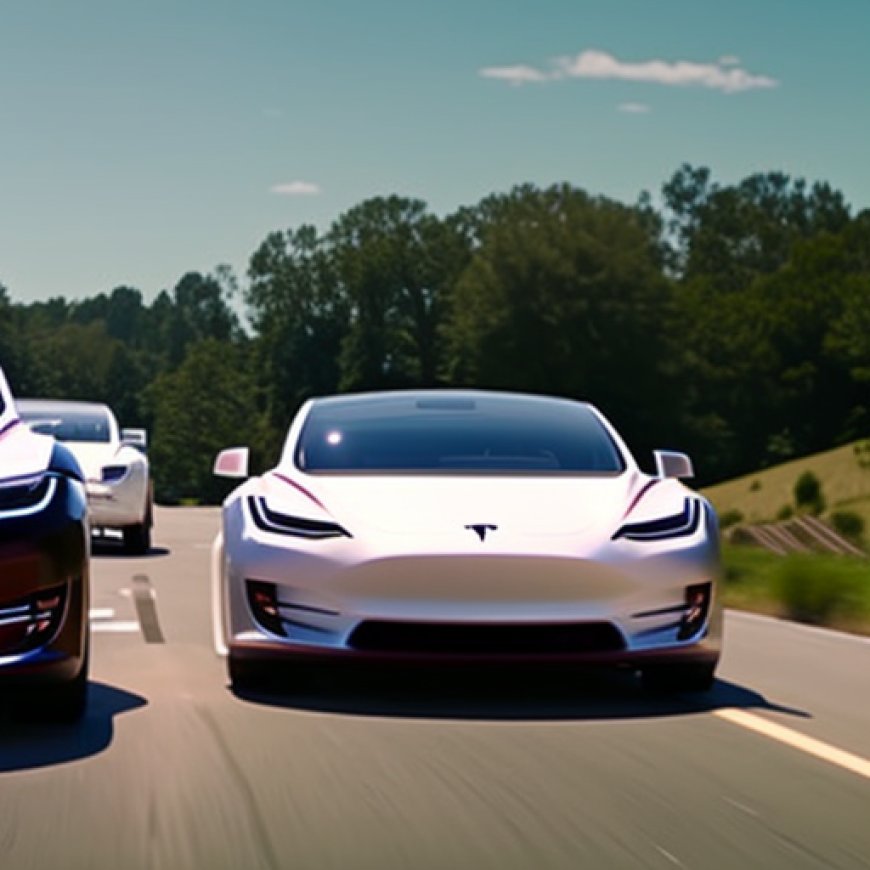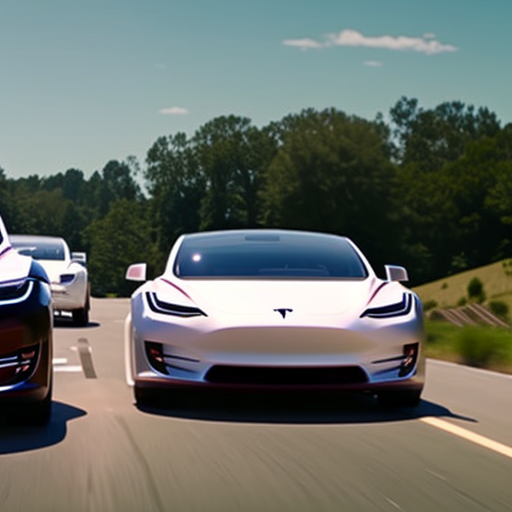With Tesla Stock Down 31% In 2024, Musk’s Robotaxi Push Aids Short Sellers
With Tesla Stock Down 31% In 2024, Musk's Robotaxi Push Aids Short Sellers Forbes


Tesla Stock: Is It Cheap or Overpriced?
With Tesla stock down 31% this year as of April 12, is the electric vehicle company’s stock cheap or overpriced?
Reasons for Expensive Stock
- Tesla delivered fewer vehicles than expected and forecasts more disappointment.
- Tesla appears hesitant about winning over value-sensitive buyers — leaving that segment of the market to lower-priced rivals such as BYD.
- Tesla’s pivot to Robotaxis has little chance of restoring revenue growth.
Tesla appears reluctant to lower prices enough to challenge Chinese rivals who offer consumers much more affordable EVs. As a result, one analyst appears to be losing patience with Tesla’s disappointing growth.
Tesla reportedly will cut “more than 10%” of its roughly 140,000 workers, according to Reuters. “As we prepare the company for our next phase of growth, it is extremely important to look at every aspect of the company for cost reductions and increasing productivity,” Tesla CEO Elon Musk said in an internal memo cited by Reuters.
Tesla Falling Short of Investor Expectations
The brakes have been slammed on Tesla’s growth. Tesla issued a weak fourth quarter report and delivered below-expectations guidance for 2024. The auto maker’s operating margin fell by half and first quarter 2024 vehicle deliveries missed the analyst consensus significantly.
Here are the key numbers:
- Q4 2023 revenue: $25.17 billion — up 3% from Q4 2023 and about $500 million short of London Stock Exchange Group expectations. A “reduced average selling price following steep price cuts around the world in the second half of the year” contributed to the meager revenue growth, according to CNBC.
- Q4 2023 operating margin: 8.2% — roughly half the Q4 2023 figure, CNBC reported.
- 2024 vehicle volume forecast: Electric vehicle volume growth in 2024 “may be notably lower” than the rate observed last year, as Tesla “shipped 1.8 million cars in 2023,” CNBC wrote. The absence of a specific 2024 production target departed from previous years. In 2023, deliveries rose 38% — well short of the 50% target. Analysts predict a 20% increase in 2024, noted Bloomberg.
- 2024 Q1 vehicle deliveries: 386,810 — 14% below the “analyst consensus estimate of 449,080,” noted an April email from investment manager, Louis Navellier.
Tesla Running Away From Customers And Competition
Consumers are getting far more value-sensitive — meaning they want a safe, low-cost way to drive. Lower gasoline prices, relatively high EV prices, long battery charging times, and significant range anxiety are among the challenges EV makers must overcome to win customers.
China-based rivals BYD and Li Auto are responding to these consumer preferences by setting much lower prices for their EVs, according to the Wall Street Journal, thus capturing Chinese market share from Tesla.
Rather than compete for value-sensitive customers, Tesla appears to be running away from them. “Reuters reported Tesla had scrapped its plans for a long-promised, lower-cost electric vehicle, known as the Model 2. Musk denied the report by saying ‘Reuters is lying,’ ” noted MarketWatch.
One analyst expressed distrust of Musk’s response to the Model 2 cancellation report. There is “little evidence that it is aggressively in progress, as we would expect for a car due to start producing at commercial scale at the end of next year, per Elon’s latest dubious promise,” noted Vicki Bryan, founder and CEO of the Bond Angle LLC, in an email featured by MarketWatch.
Is Tesla unwilling or unable to sacrifice profitability to offer EVs that consumers view as delivering more bang for the buck than, say, BYD’s $25,000 Seal sedan?
Tesla’s Robotaxi Unlikely To Boost Growth
Musk has a track record of changing the subject when Tesla disappoints. For example, in January 2024, he told investors in an earnings call how excited he was about shipping Optimus robots after the company’s weak results, CNBC reported.
Tesla is falling short of that ambitious vision. Cybertruck production shifts were shortened at the company’s Austin, Texas Gigafactory, according to Business Insider.
Last week, Musk touted an August reveal of a robotaxi — a self-driving vehicle with no ability for drivers to take control. In my view, Tesla’s robotaxi is unlikely to boost the company’s revenue growth.
Tesla Lags Waymo In Launching A Robotaxi Fleet
Tesla is far behind Waymo, the robotaxi industry leader, which is not close to building a significant business.
Waymo’s fleet has driven 20 billion miles and now runs commercial robotaxi services in San Francisco and Phoenix and launched operations last week in Los Angeles.
Sadly, there are good reasons for consumers to avoid robotaxis. For example, in February 2024, a Waymo driverless vehicle “collided with a cyclist in San Francisco at a four-way intersection, where the cyclist was initially blocked from view by a truck,” noted MarketWatch.
Tesla Self-Driving Technology Is Flawed
Robotaxis depend on self-driving technology, which Tesla has yet to master. Musk has been encouraging new Tesla customers to purchase the driver-assistance system “while also defending against litigation that it doesn’t work as promoted,” according to the Wall Street Journal.
Tesla’s Full Self-Driving technology is a misnomer because the $12,000 one-time fee requires drivers to maintain attention on the road. Moreover, should there be an accident while FSD is engaged, Tesla holds the driver legally responsible, noted the Journal.
In October 2019, Musk predicted Tesla would have one million robotaxis on the road in 2020, according to The Drive — a million more than Tesla had produced in April 2024.
“They are clearly years away from getting there,” Philip Koopman, associate professor of electrical and computer engineering at Carnegie Mellon University, told MarketWatch.
“This is a multi-year problem. Any claim of
SDGs, Targets, and Indicators Analysis
1. Which SDGs are addressed or connected to the issues highlighted in the article?
- SDG 9: Industry, Innovation, and Infrastructure
- SDG 11: Sustainable Cities and Communities
- SDG 13: Climate Action
- SDG 16: Peace, Justice, and Strong Institutions
2. What specific targets under those SDGs can be identified based on the article’s content?
- SDG 9.4: By 2030, upgrade infrastructure and retrofit industries to make them sustainable, with increased resource-use efficiency and greater adoption of clean and environmentally sound technologies and industrial processes.
- SDG 11.2: By 2030, provide access to safe, affordable, accessible, and sustainable transport systems for all, improving road safety, notably by expanding public transport, with special attention to the needs of those in vulnerable situations, women, children, persons with disabilities, and older persons.
- SDG 13.2: Integrate climate change measures into national policies, strategies, and planning.
- SDG 16.6: Develop effective, accountable, and transparent institutions at all levels.
3. Are there any indicators mentioned or implied in the article that can be used to measure progress towards the identified targets?
- Indicator for SDG 9.4: Proportion of total research and development (R&D) expenses spent on sustainable technologies.
- Indicator for SDG 11.2: Proportion of the population that has convenient access to public transport, by sex, age, and persons with disabilities.
- Indicator for SDG 13.2: Number of countries that have communicated the strengthening of institutional, systemic, and individual capacity-building to implement adaptation, mitigation, and technology transfer.
- Indicator for SDG 16.6: Proportion of the population satisfied with their last experience of public services.
Table: SDGs, Targets, and Indicators
| SDGs | Targets | Indicators |
|---|---|---|
| SDG 9: Industry, Innovation, and Infrastructure | Target 9.4: By 2030, upgrade infrastructure and retrofit industries to make them sustainable, with increased resource-use efficiency and greater adoption of clean and environmentally sound technologies and industrial processes. | Indicator: Proportion of total research and development (R&D) expenses spent on sustainable technologies. |
| SDG 11: Sustainable Cities and Communities | Target 11.2: By 2030, provide access to safe, affordable, accessible, and sustainable transport systems for all, improving road safety, notably by expanding public transport, with special attention to the needs of those in vulnerable situations, women, children, persons with disabilities, and older persons. | Indicator: Proportion of the population that has convenient access to public transport, by sex, age, and persons with disabilities. |
| SDG 13: Climate Action | Target 13.2: Integrate climate change measures into national policies, strategies, and planning. | Indicator: Number of countries that have communicated the strengthening of institutional, systemic, and individual capacity-building to implement adaptation, mitigation, and technology transfer. |
| SDG 16: Peace, Justice, and Strong Institutions | Target 16.6: Develop effective, accountable, and transparent institutions at all levels. | Indicator: Proportion of the population satisfied with their last experience of public services. |
Behold! This splendid article springs forth from the wellspring of knowledge, shaped by a wondrous proprietary AI technology that delved into a vast ocean of data, illuminating the path towards the Sustainable Development Goals. Remember that all rights are reserved by SDG Investors LLC, empowering us to champion progress together.
Source: forbes.com

Join us, as fellow seekers of change, on a transformative journey at https://sdgtalks.ai/welcome, where you can become a member and actively contribute to shaping a brighter future.







